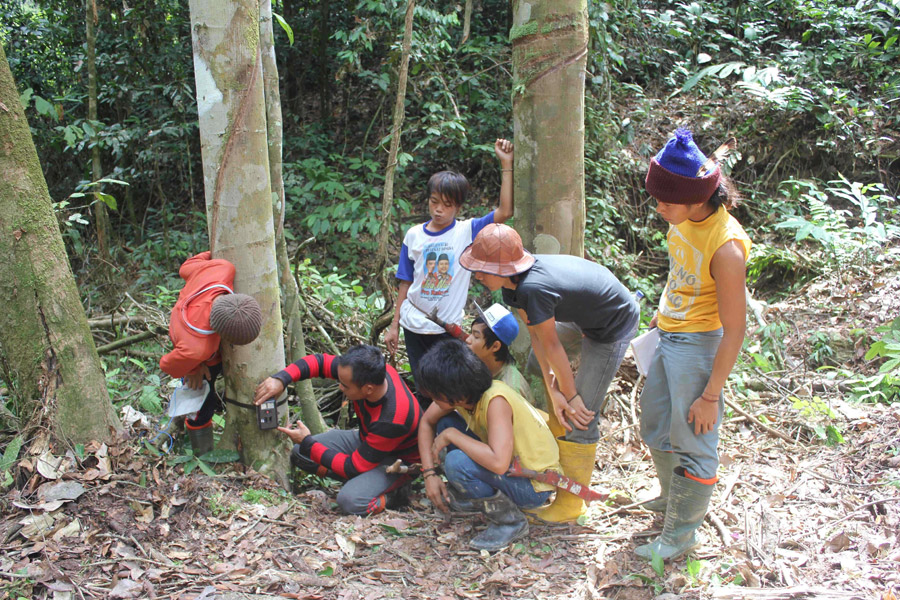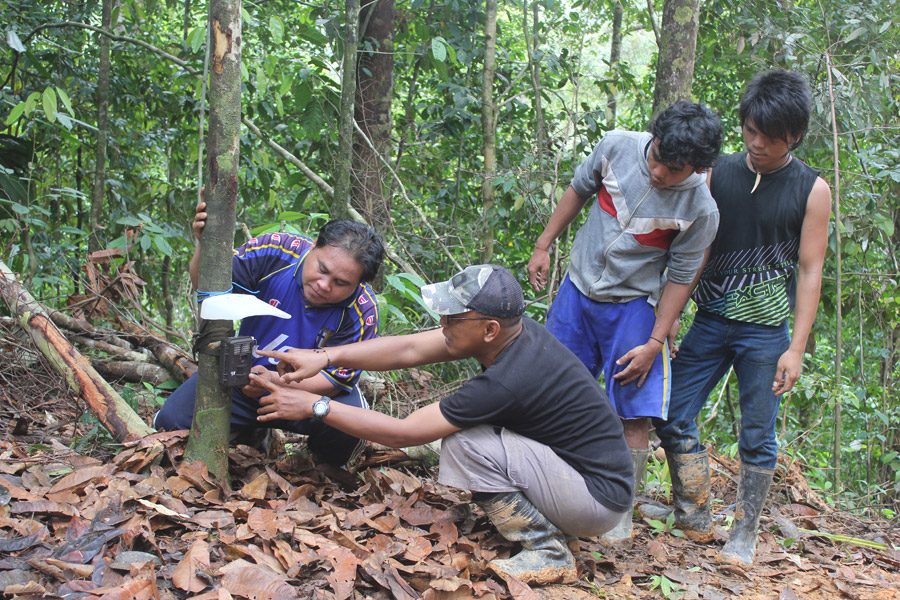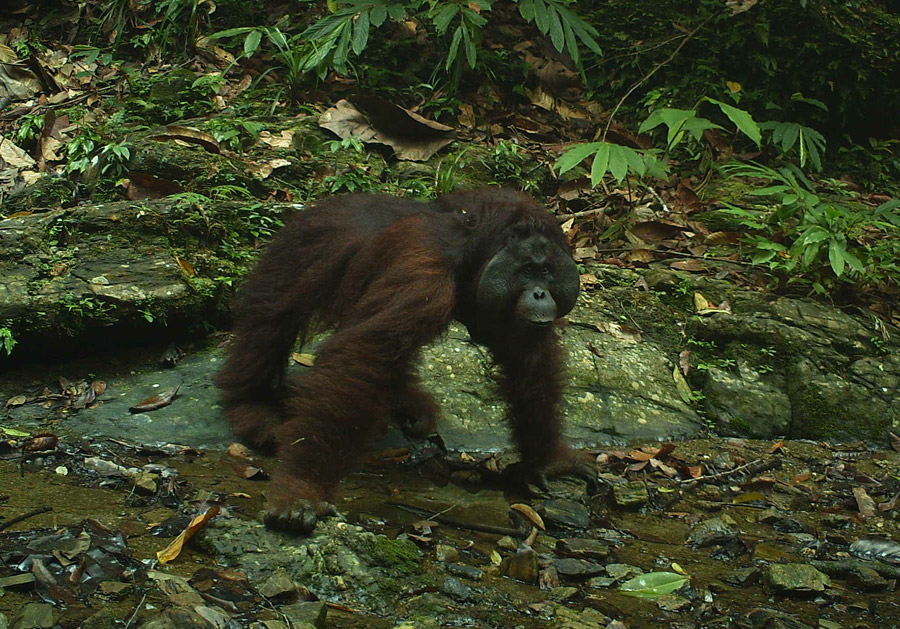- In a recent study, game camera traps were used to identify and estimate the numbers of orangutans in the Wehea Forest of East Kalimantan, Borneo.
- Prior to the study, the most reliable method for estimating orangutan population numbers was to count the number of orangutan nests in a certain area.
- Given the current dire conservation situation for orangutans, the study team believes that camera trapping is an important step toward obtaining a more accurate understanding of the number of orangutans that still exist.
A recent article published in the journal Biological Conservation details a research study led by University of Wisconsin physical anthropologist Dr. Stephanie Spehar which utilized game camera traps to identify and estimate the numbers of orangutans in the Wehea Forest of East Kalimantan, Borneo. The researchers believe the cameras may provide more accurate population counts to assist in future conservation efforts.
The study team set up networks of game cameras within the 38,000 hectare Wehea Forest wilderness of mostly undisturbed rainforest surrounded by logging concessions. The team chose two distinct areas for camera placement — dense primary forest with a closed tree canopy, and a secondary forest last logged in 1996. The study sought to test whether camera trapping methods, so successful with other elusive species such as the clouded leopard (Neofelis diardi), could be used to count orangutans.

Prior to the study, the most reliable method for estimating orangutan population numbers was to count the number of orangutan nests in a certain area. “Orangutan nests look like large bird nests and are used for sleeping during the night and sometimes for resting during the day” describes Brent Loken, a team member and doctoral candidate at Simon Fraser University, British Columbia, who spoke with mongabay.com regarding the study. “They mainly build a new nest each day but sometimes return to old nests to rest. Babies typically sleep with mothers and mothers often build separate nests for infants and juveniles.”
Nest counting to estimate population size has limitations, the study cautions. “[O]rangutans are very elusive and difficult to count directly, so researchers usually have to rely on counts of indirect signs to survey populations,” explains Spehar, in correspondence with mongabay.com. “All adult orangutans build nests, and nests don’t run away from observers!”

Spehar adds, “Generally, they build one nest per day, although this can vary, and the nests can last a very long time; in some areas, over a year. When you count all the nests that you find, you can’t assume each nest equals one orangutan. You would vastly overestimate the number of orangutans in an area!”

Researchers typically use three main variables to convert nest counts into individual orangutan numbers: the number of nest builders in a population (juvenile orangutans also build nests), the number of nests orangutans generally build per day (sometimes they build more than one per day, or reuse nests), and the length of time it generally takes a nest to decay (from the time built to complete disappearance).
“The real problem [in determining populations] seems to come from the decay rate variable, because this can vary vastly, depending on rainfall, wind, and forest composition” Spehar notes.
“Decay rate varies between 80 days and 2 years, and this is the root of many problems with the nest counting method,” she says. “Watching orangutans and nests takes a lot of time and effort. Researchers have, understandably, often applied variables calculated from different sites to the site they’re surveying. This can lead to density estimates that are questionable. That’s why this camera trap method is so cool — because it allows us to avoid these issues with the nest count method, while also providing all sorts of other information that you just can’t get from nests.”
The team based their game camera survey on previously published studies that showed orangutans spending much more time on the ground than previously thought. “Camera traps have been used quite extensively to count species such as leopards and jaguars,” Loken notes, “but this is the first time this method has been used for orangutans… [T]he more accurate information we have about where orangutans live and how many still exist in the wild, the better we can protect this endangered species.”

The researchers were excited to discover they could identify individuals from camera trap photos and recognize when the same individual had been recaptured in other locations — necessary information for estimating population size. These findings hadn’t been consistently demonstrated for great apes before now, and more research will be necessary before the method is perfected. “While our findings indicate that camera traps offer a promising alternative for estimating orangutan density, using them won’t instantly produce more accurate estimates,” says Loken. “More work needs to be done to test where they can be most useful.”

Given the current dire conservation situation for orangutans, the study team believes that camera trapping is an important and timely step forward in obtaining a more accurate understanding of the number of orangutans that still exist on Borneo and Sumatra, and a potentially valuable conservation tool for counting and monitoring other ape populations in the future.







As part of a separate study, co-authors of Ascending the Giants (published by Integrated Conservation, 2011), Brent Loken and Will Koomjian climbed up to orangutan nests to study their construction and recover hair and feces for genetic analysis.
Citation: Spehar, S., Loken, B., Rayadin, Y., Royle, A. (2015). Comparing spatial capture-recapture modeling and nest count methods to estimate orangutan densities in the Wehea Forest, East Kalimantan, Indonesia. Biological Conservation.